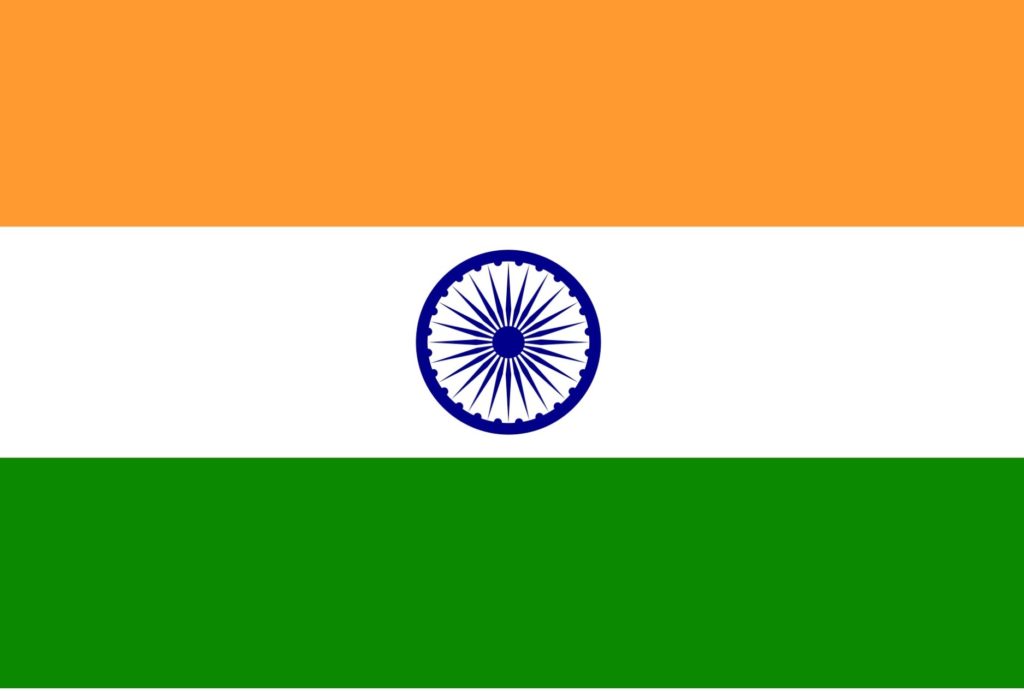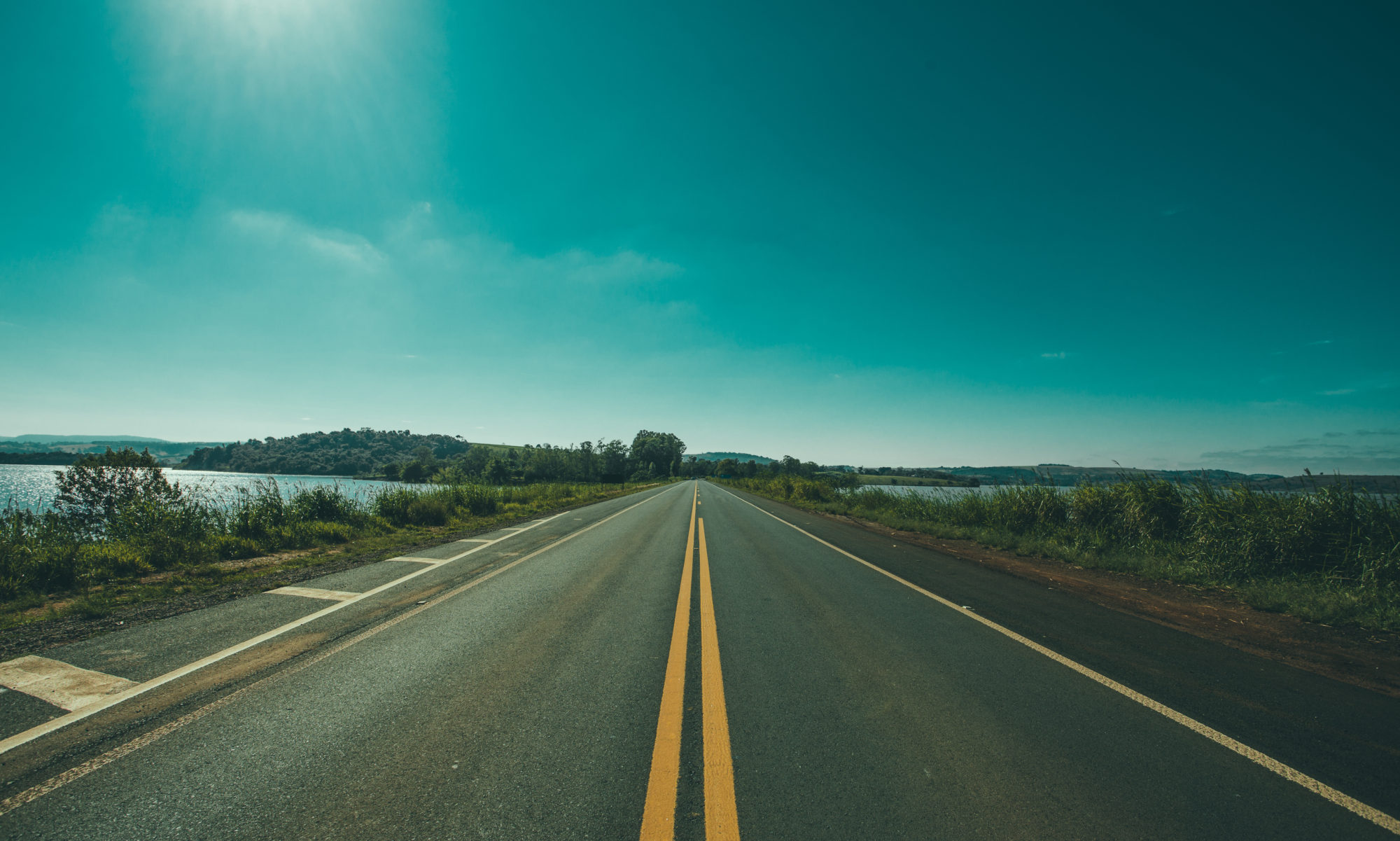From Calcutta, we plan to take an overnight train to Varanasi. However, the trains are booked solid. We fly instead.
We arrive at the Ganpati Guest House. Our room has a balcony overlooking the Ganges.
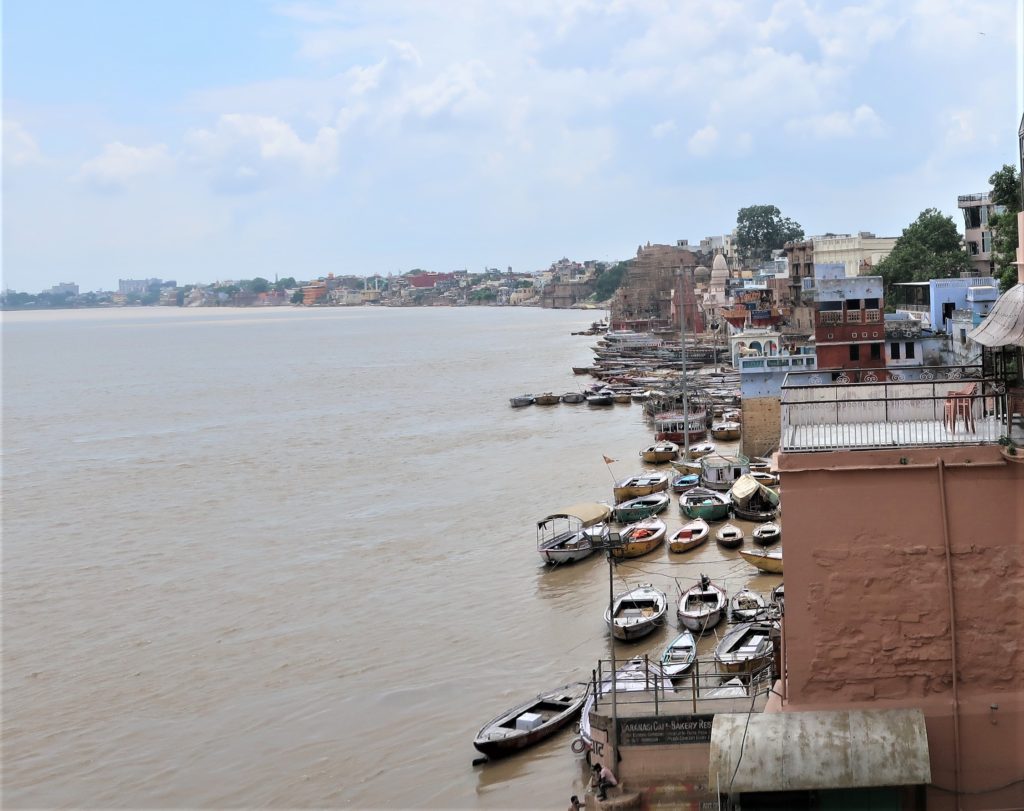
the crazy days of my life…’
Every now and then, a dead cow floats by. There’s a life lesson in there somewhere.
Normally, the riverfront serves as a landmark (watermark?) by which to navigate the labyrinth of Varanasi lanes – you just follow the shoreline.
Because the water is so high at this time of year, we hire a guide to walk us through the alleys of old Varanasi. Otherwise we’d never find our way in the maze.
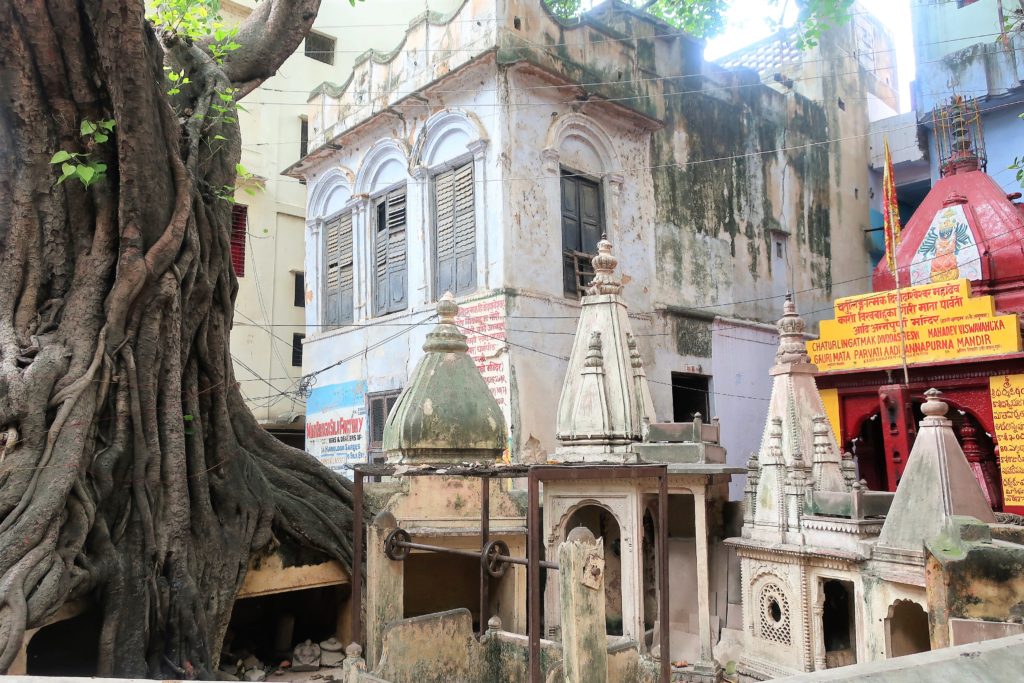
The laneways are constantly thronged with chanting people carrying the deceased down to the river for cremation.
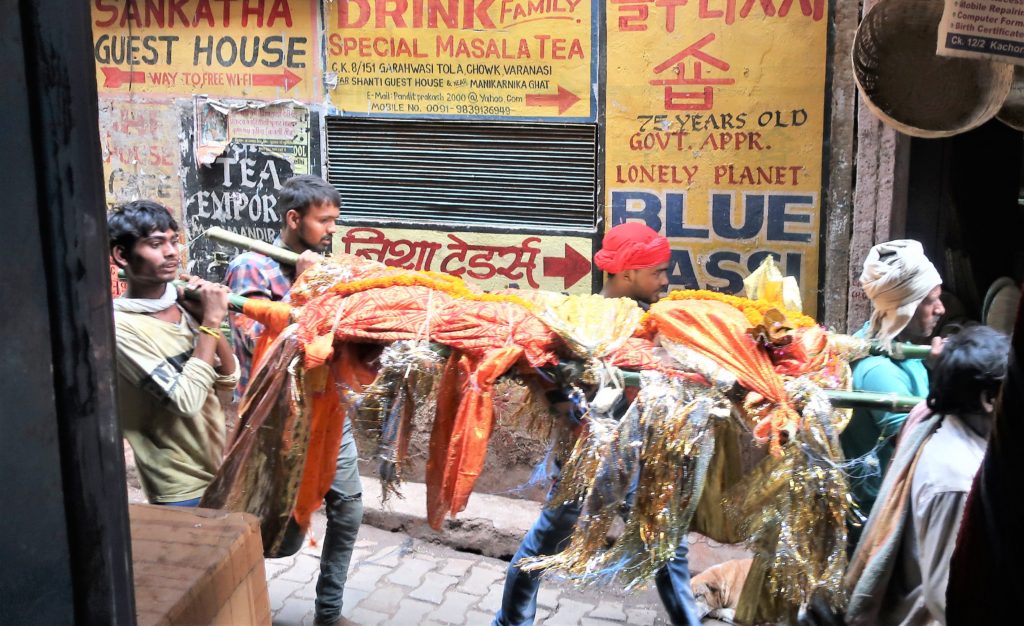
This is one of the cremation ghats. Bodies are washed in the Ganges, then cremated, then the ashes are thrown in the river. This is a good thing if you’re a Hindu. It means immediate moksha.
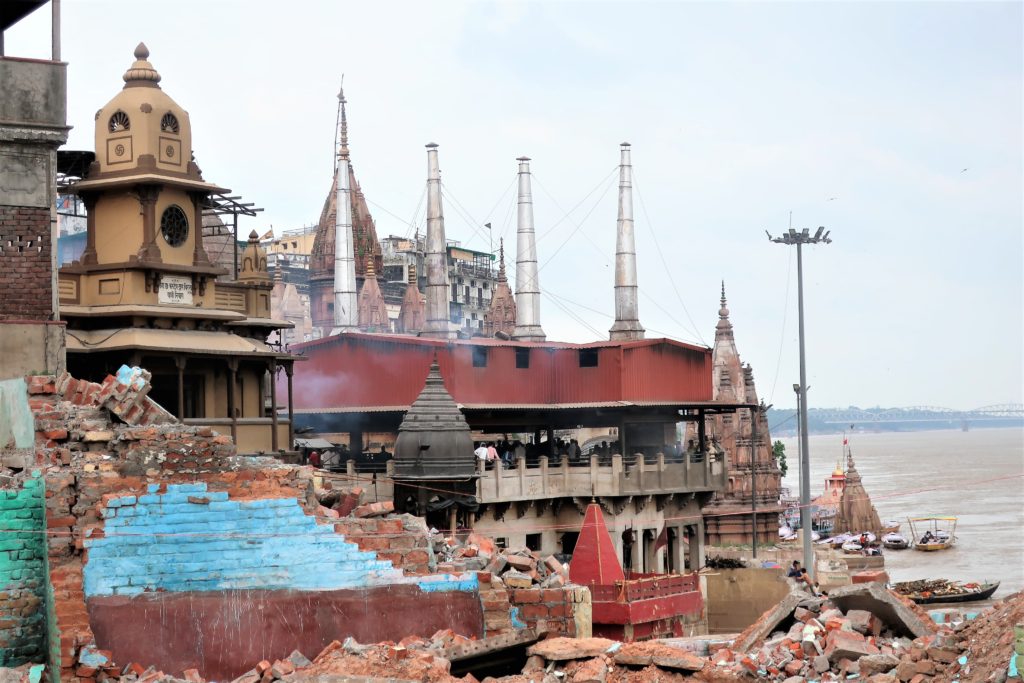
Selling firewood for the cremation ghats is big business.
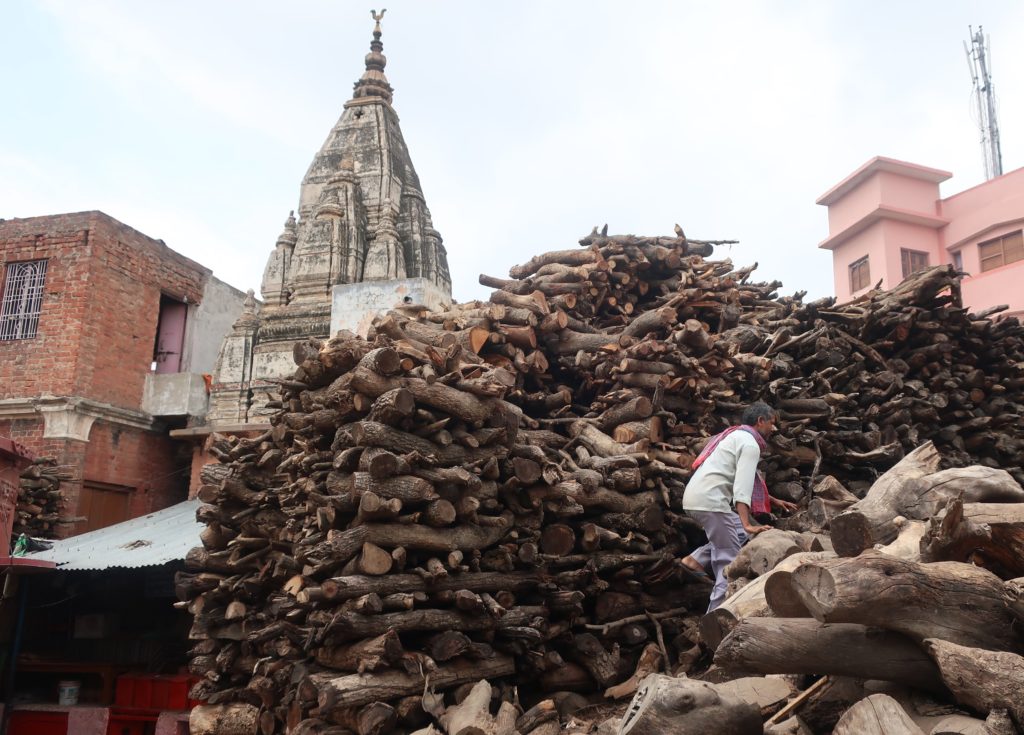
Strolling through town, we come across a school, where we take a rest in the entrance-way.
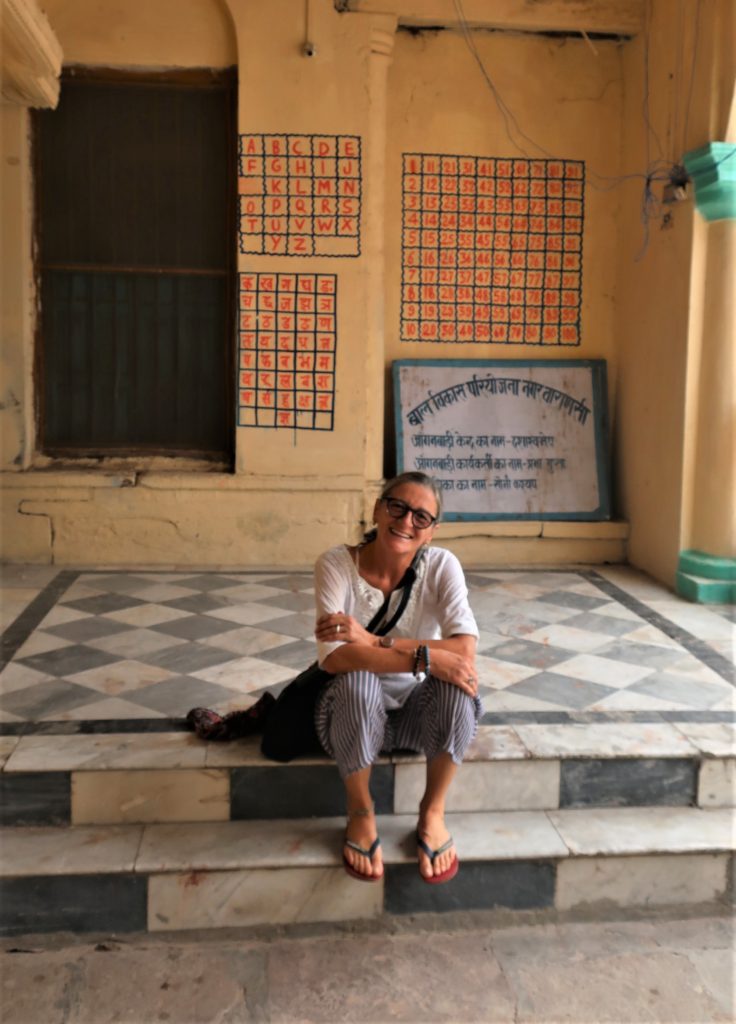
As mentioned, we hire a guide to walk us though the labyrinth of lanes in old Varanasi. When we go out on our own, we are lost within minutes.
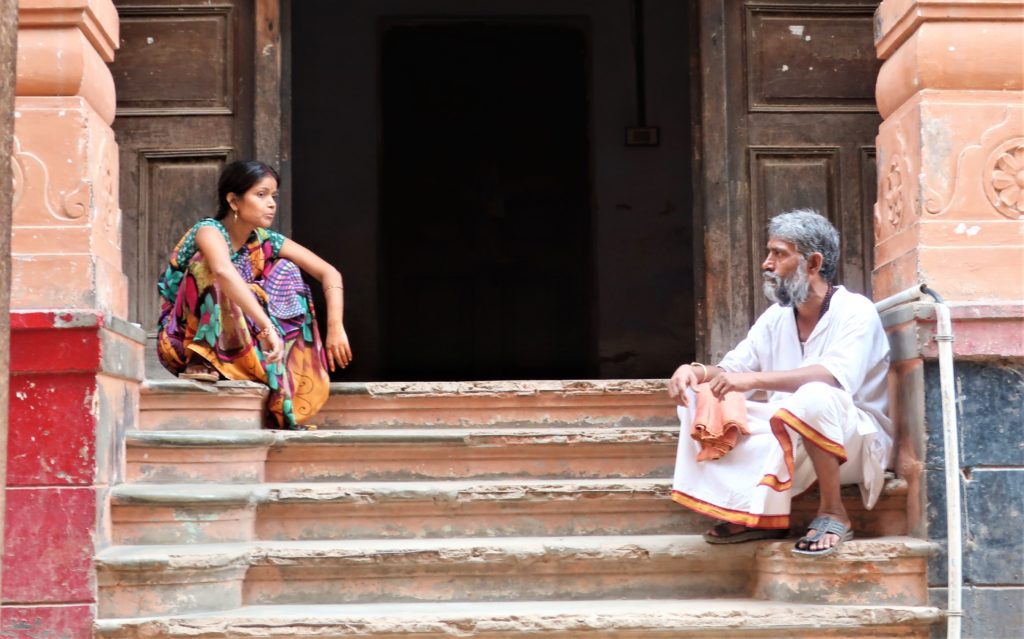
This kid is leading his brick-laden mules through a part of town that is being razed (on dubious authority) and reclaimed by Indian real estate speculators. Look for an extremely ugly concrete hotel here in the near future.
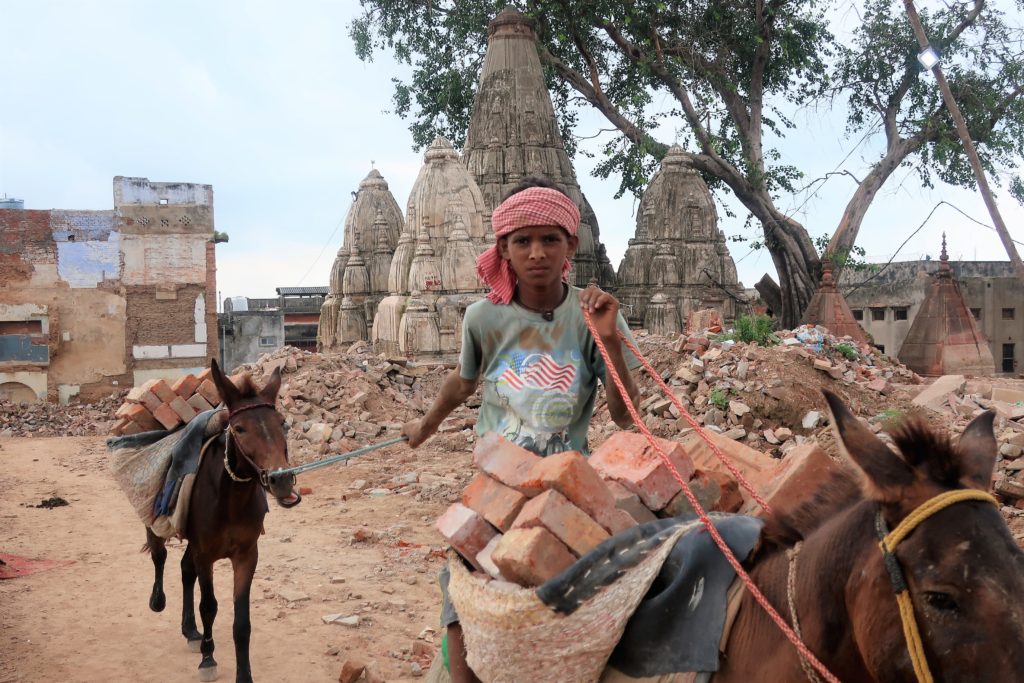
It doesn’t take much space to run a business here. This paan-seller manages with a square metre or so.
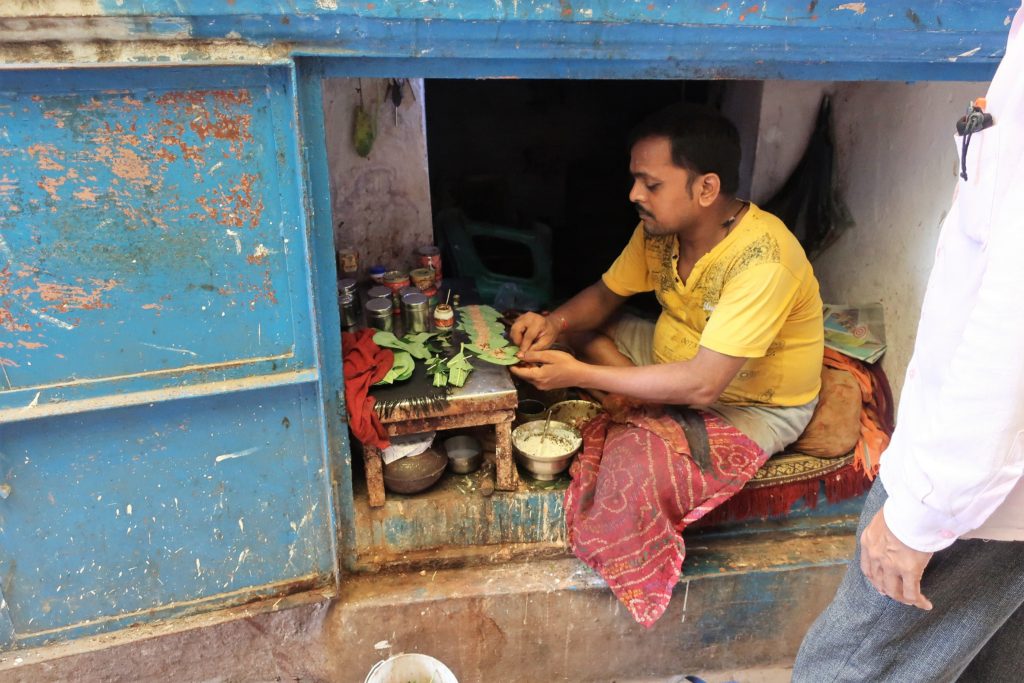
Paan is the source of the solid encrustations of red spit that you see everywhere in India. It must be addictive, because men are always rolling it around in their palms, then stuffing it into their mouths. We seldom take a tuk-tuk ride where the driver doesn’t have to stop and buy some more from the ubiquitous paan shops.
In this temple, kids prepare plants that are sacred to Shiva.
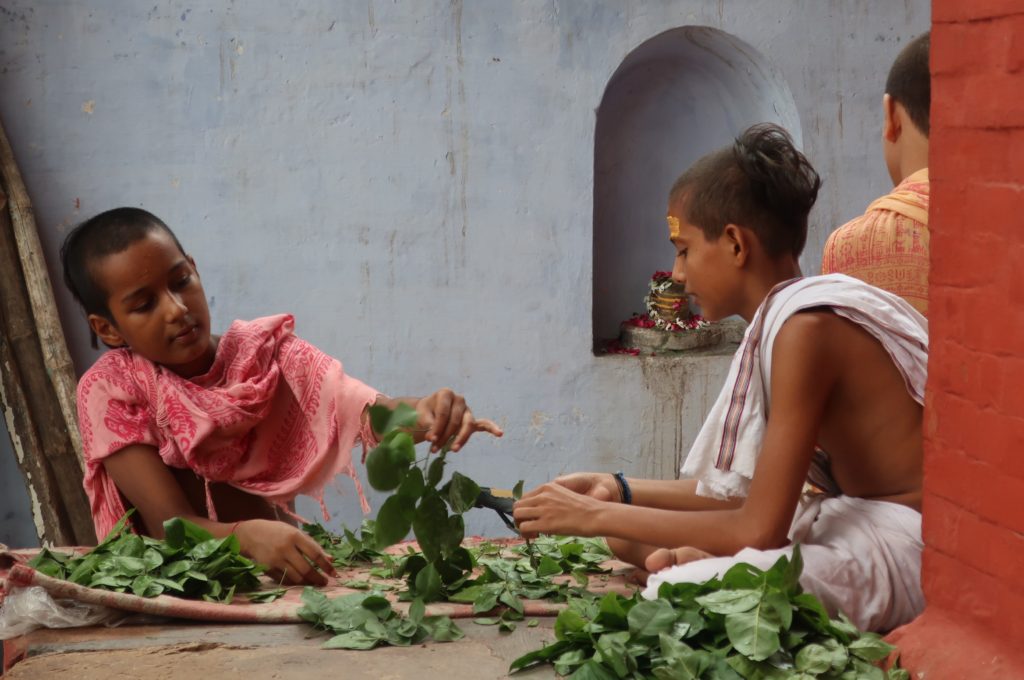
We visit nearby Sarnath. This is where Buddha is supposed to have given his first sermon after his enlightenment.
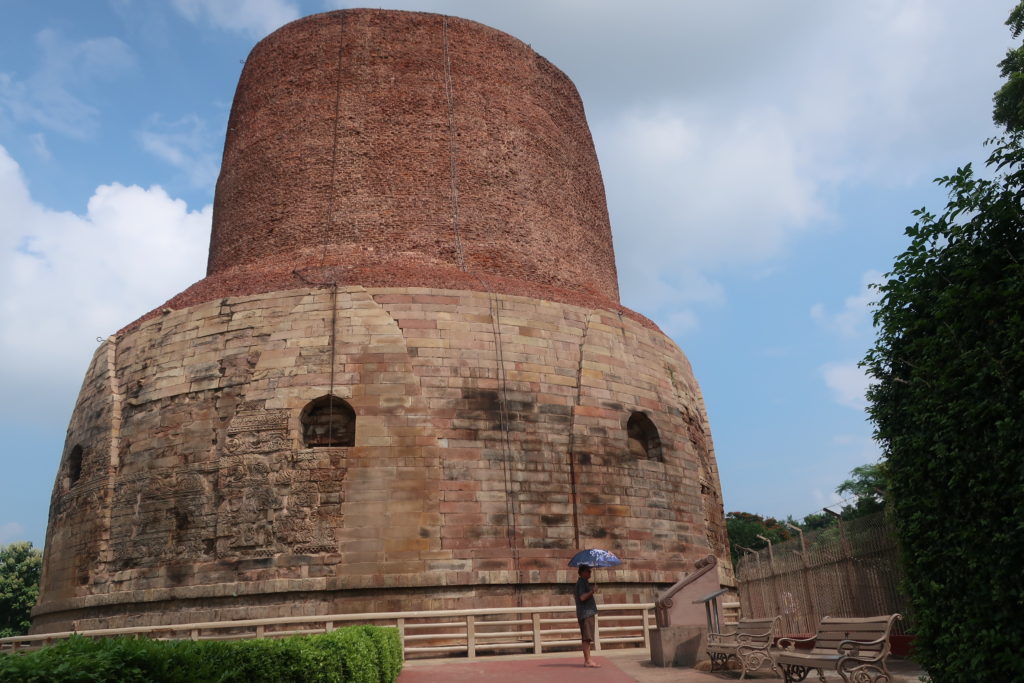
His actual enlightenment took place beneath a tree in Bhodgaya, a few hundred kilometres from here.
We head down to the bathing ghats. There are many, many religious items for sale.
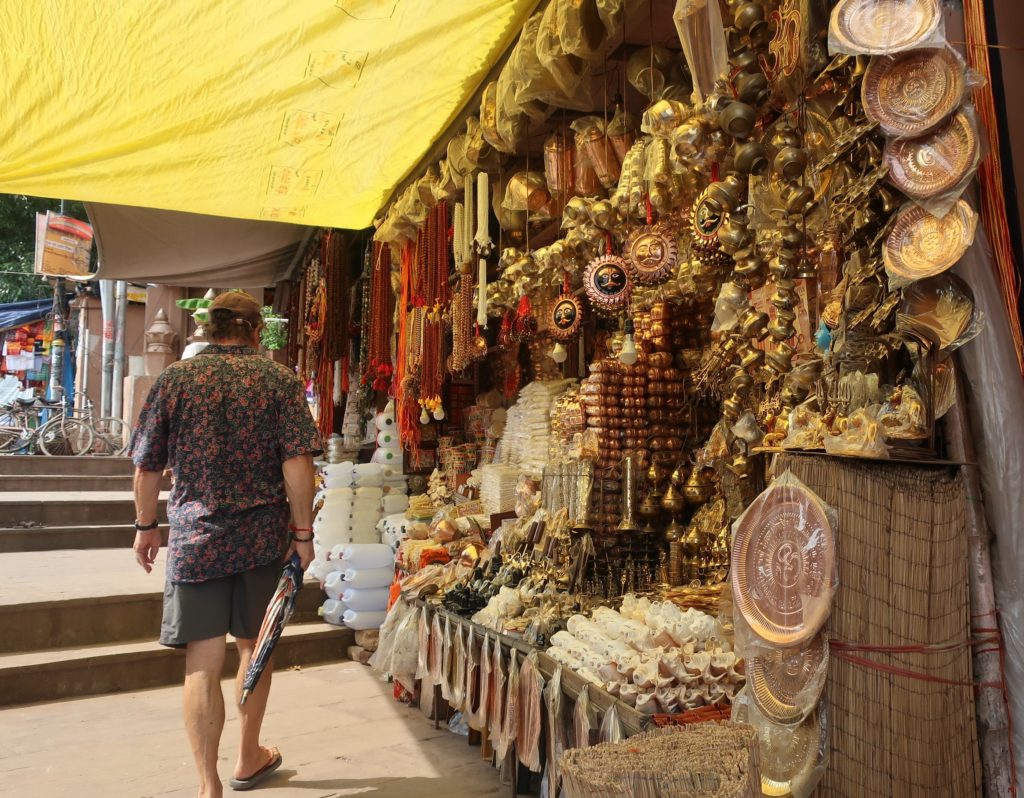
Bathing in the Ganges is a means of purification. Just look out for the dead cows.
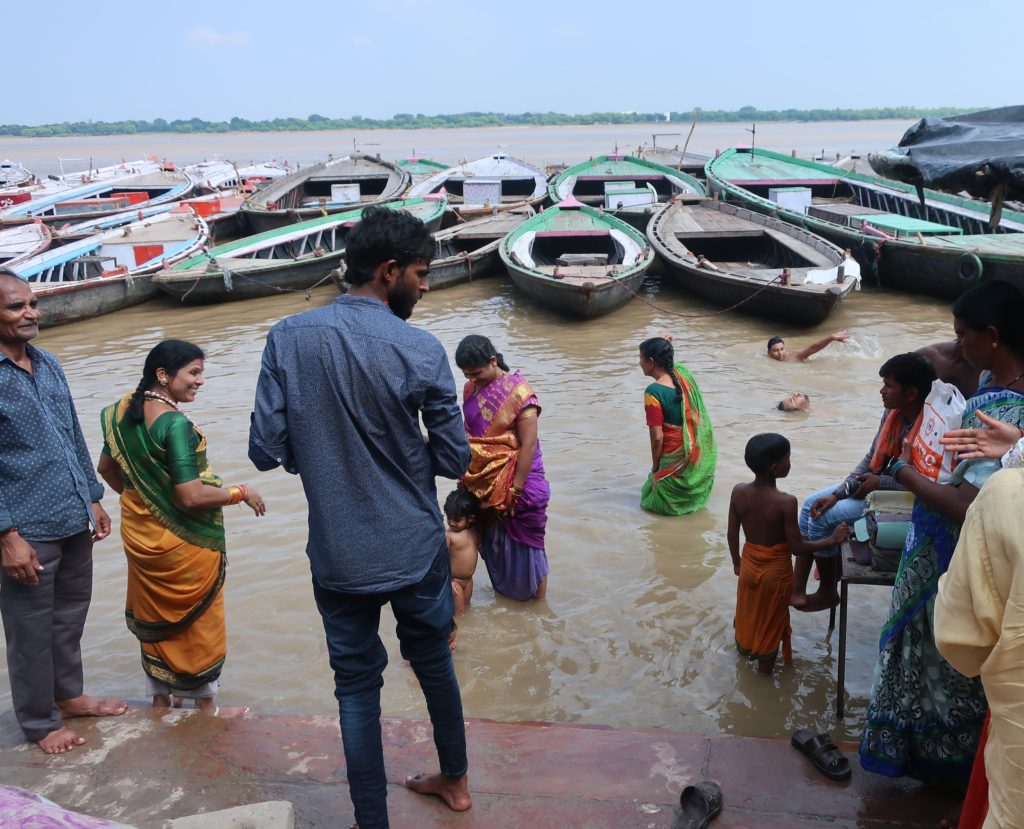
Back in town, a man constructs artisanal lassis.
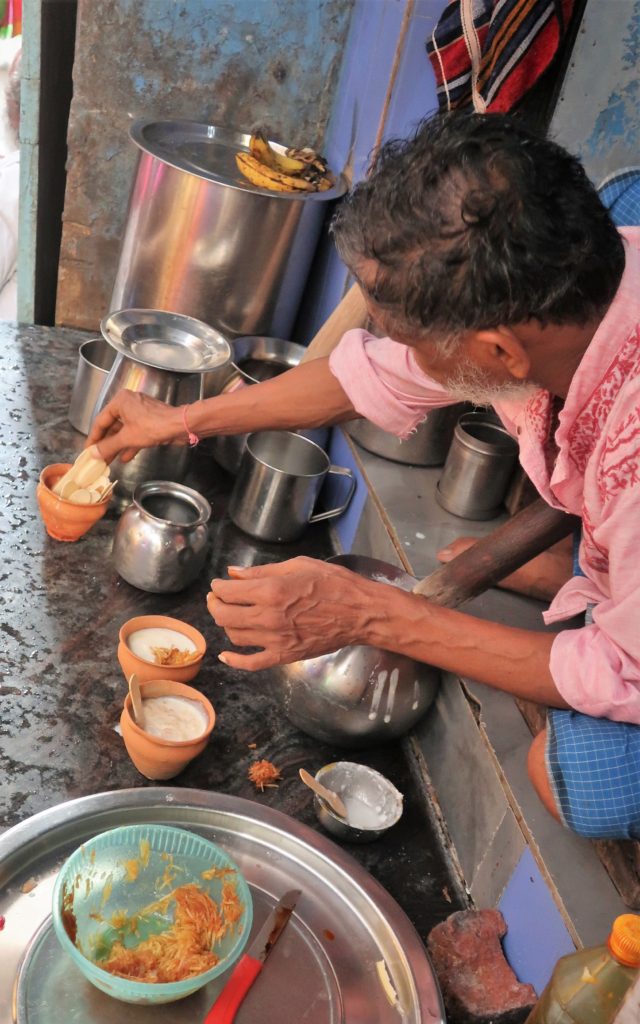
One day, we visit several temples. One is the Durga Temple.
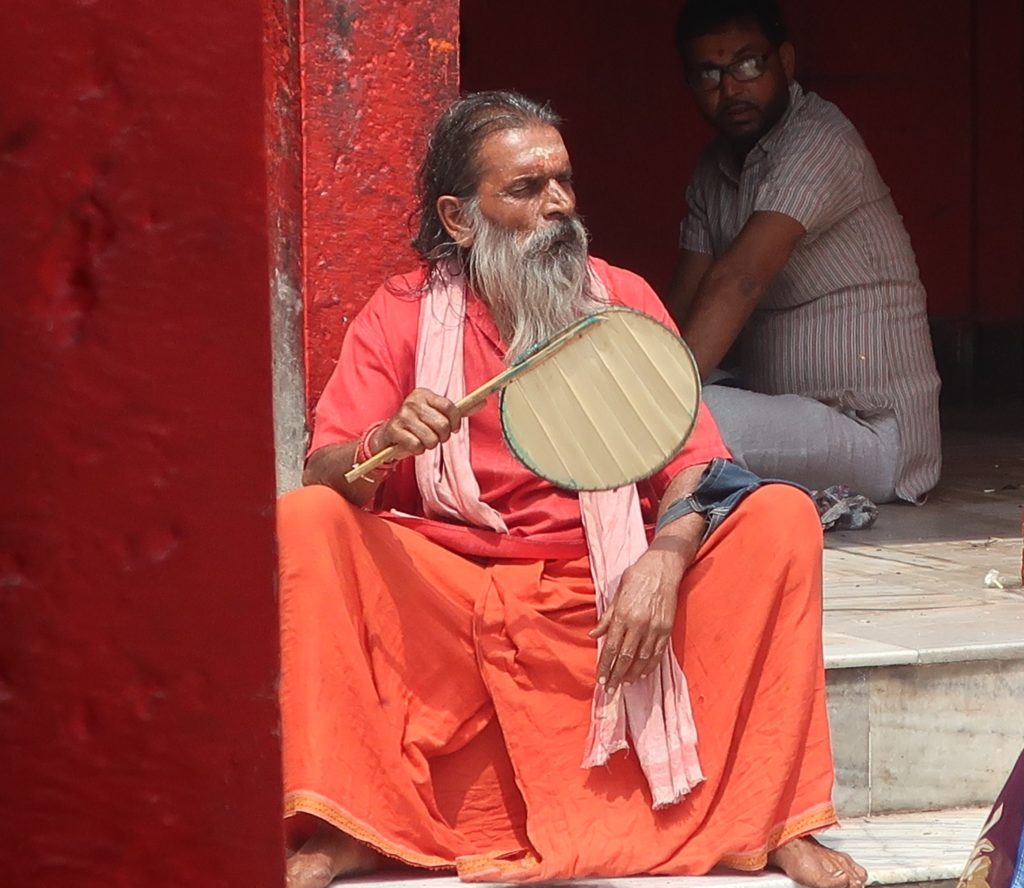
It is some sort of auspicious day, so the temple is packed with worshipers. They don’t seem to mind the presence of our infidel selves.
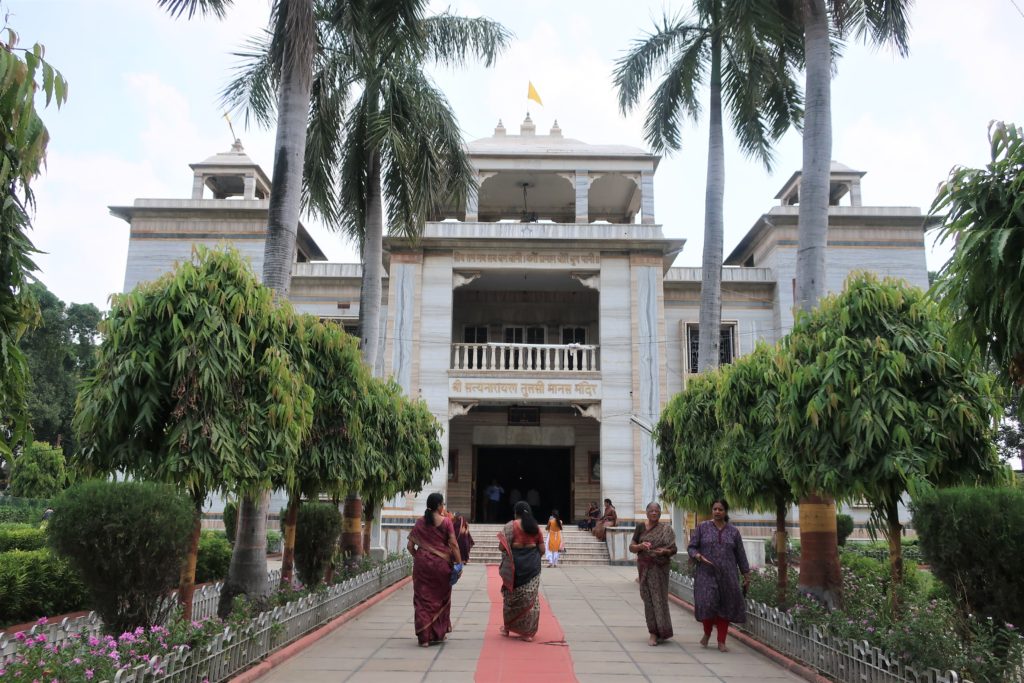
We go to the Tulsi Manas temple next door, built to commemorate a 16th century translator of the Ramayana.
Goswami Tulsidas was a sort of St. Jerome of the Ramayana – he translated it from Sanskrit into a Hindi dialect so that it can be read by the common people.
We also visit the hanuman temple. This was established by the same Tulsidas.
With so many holy sites around, there are plenty of sadhus and fakirs.
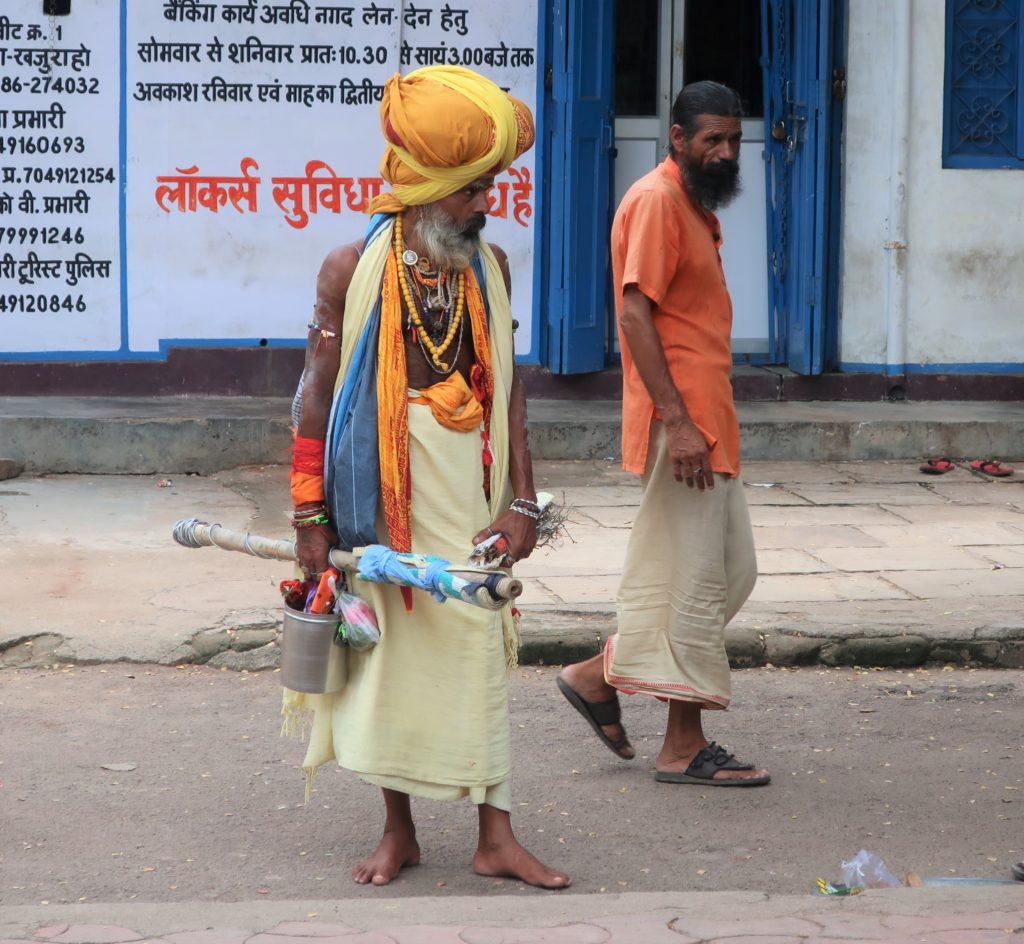
Another place we visit is the Ramnagar Fort across the river.
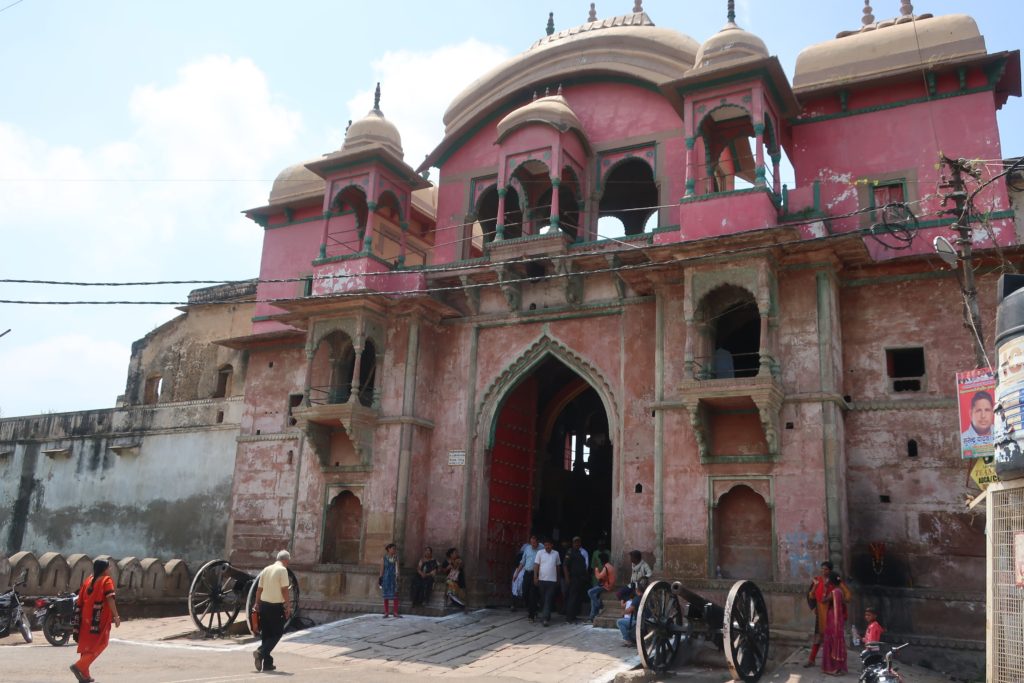
It is much reduced from its glory days.
Sight or Insight of the Day
In Sarnath, we visit the Archaeological Museum. This contains an excellent example of a lion capital from the top of a Pillar of Ashoka.
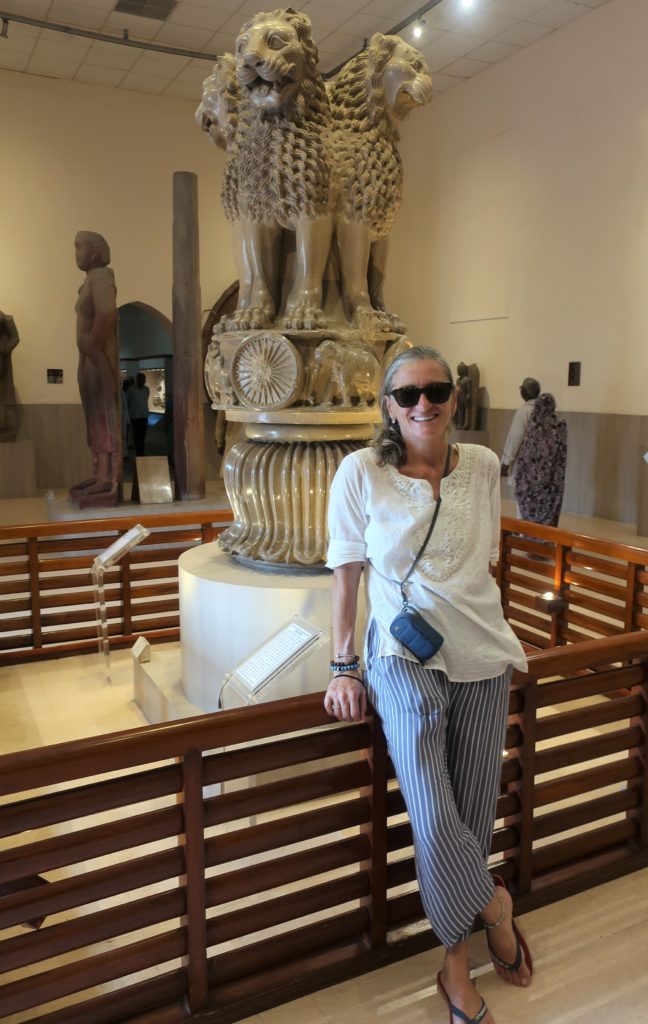
Ashoka was a famous king of India in the third century B.C. After butchering 100,000 people in a war, he has a change of heart and embraces Buddhism.
He erects pillars throughout northern India, engraved with edicts and suggestions about living a good life.
These lion capitals have become the symbol of the modern Government of India. They’re featured on some of the banknotes.
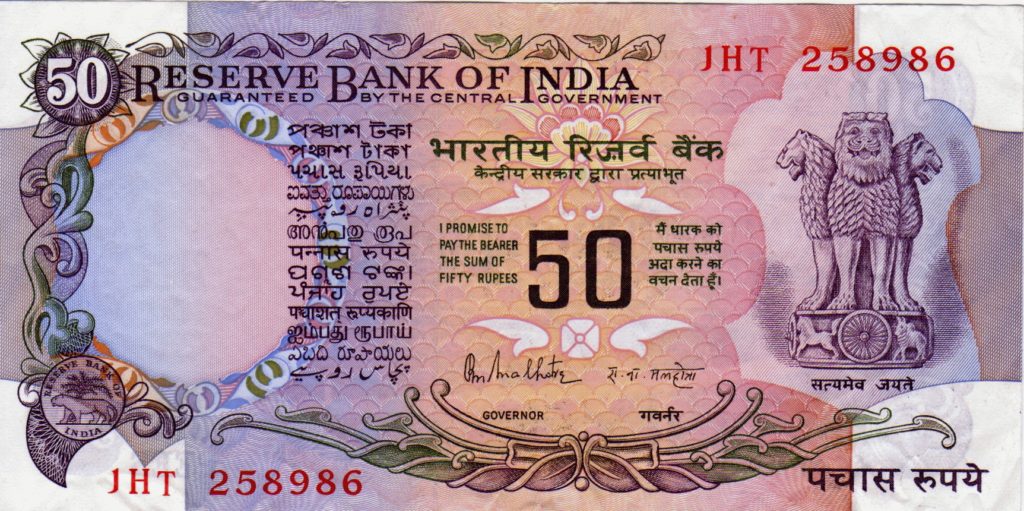
The Wheel of Dharma beneath the lions is also a feature of the Indian flag.
